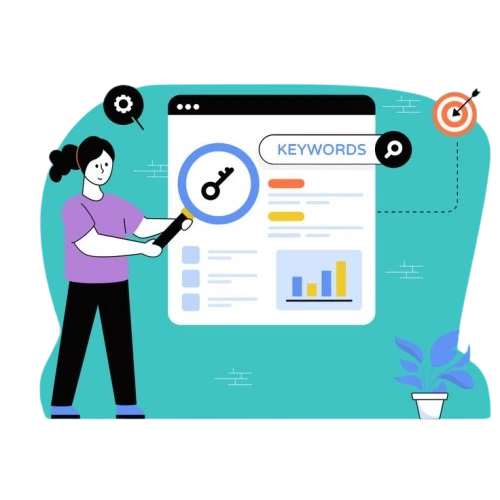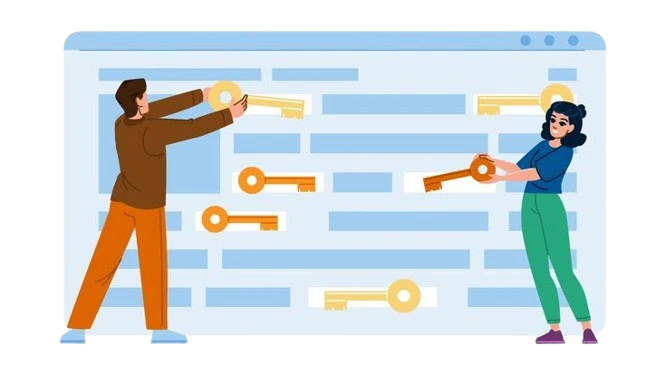Common SEO Mistakes to Avoid: Tips for Better Rankings
Search Engine Optimization (SEO) is essential for improving your website’s visibility and attracting organic traffic, but even the most well-designed websites can struggle to rank if they fall into common SEO traps. Whether you’re a business owner, content creator, or digital marketer, understanding what not to do is just as important as knowing best practices. In this blog, we’ll walk you through some of the most frequent SEO mistakes and how to fix them, helping you climb higher in search engine results and get the attention your site deserves.
1. Ignoring Keyword Research
One of the biggest SEO mistakes is skipping keyword research. Without targeting the right keywords, your content may not appear in relevant searches, limiting your site’s visibility. Guesswork is rarely effective, so it’s important to use tools like Google Keyword Planner, SEMrush, or Ubersuggest to discover the terms your audience is actively searching for. Analyzing search volume and user intent helps you select keywords that attract the right visitors. Focus on a mix of short-tail keywords for broader reach and long-tail keywords for more specific, highly targeted traffic that’s more likely to convert.


2. Keyword Stuffing
Using your target keyword excessively, a practice known as keyword stuffing, can actually harm your SEO efforts. Search engines like Google are smart enough to recognize when keywords are overused and may penalize your site by lowering its rankings. Instead of focusing on keyword frequency, aim to incorporate your keywords naturally within your content in a way that makes sense and flows well for readers. Prioritize readability and relevance to provide real value to your audience. Remember, effective SEO is about balancing optimization with user experience—write for humans first, search engines second, and your rankings will improve.
3. Not Optimizing Title Tags and Meta Descriptions
Title tags and meta descriptions serve as your website’s first impression in search engine results, and if they’re missing, too lengthy, or not compelling, you could be missing valuable clicks and traffic. These elements play a key role in attracting users to visit your site, so it’s essential to write clear, concise, and keyword-rich title tags and meta descriptions for each page. They should accurately reflect the page content and encourage users to click through. A well-crafted snippet can significantly improve your click-through rate, making it a simple yet powerful part of your overall SEO strategy.


4. Slow Website Speed
When a website takes too long to load, visitors are more likely to leave before engaging with your content, leading to higher bounce rates and lost opportunities. Google and other search engines take these signals seriously and may lower your rankings as a result. To improve your site’s loading time, consider compressing large images, minimizing or eliminating unnecessary scripts, and using a content delivery network (CDN) to distribute content more efficiently. Faster websites keep users engaged and perform better in search results.
5. Neglecting Mobile Optimization
With further than half of all web business now coming from mobile bias, having a mobile-friendly website is no longer voluntary — it’s essential. However, you risk losing a significant portion of your followership, along with precious hunt machine rankings, If your point doesn’t display or function duly on smartphones and tablets. Google prioritizes mobile-first indexing, meaning it evaluates the mobile interpretation of your point first when determining rankings. To insure a smooth and harmonious experience across all screen sizes, use responsive design that automatically adjusts to different biases. Regularly test your point on colorful phones and tablets to catch and fix any issues beforehand.


6. Broken Links and Poor Site Structure
Broken links can create a frustrating experience for users, leading them to dead ends instead of valuable content, and they can also damage your site’s credibility. Additionally, a poor site structure can make it difficult for search engines to crawl and index your pages effectively, which negatively impacts your SEO performance. To avoid these issues, regularly audit your website for broken links using tools like Screaming Frog or Google Search Console. Alongside this, ensure your website follows a clear, logical structure with proper internal linking to help both users and search engines navigate your content easily and efficiently.
7. Overlooking Analytics and Performance Tracking
You can’t improve what you don’t measure, and failing to track your SEO performance means missing valuable opportunities for growth and optimization. Without proper monitoring, it’s difficult to understand what’s working, what needs improvement, or where your traffic is coming from. Tools like Google Analytics and Google Search Console provide essential insights into your website’s performance, including traffic sources, bounce rates, keyword rankings, and user behavior. By regularly analyzing this data, you can make informed decisions and fine-tune your SEO strategy based on real evidence rather than guesswork. Data-driven adjustments lead to better results and sustained long-term success.
8. Thin or Duplicate Content
Google prioritizes original, high-quality content because it provides real value to users. If your website contains duplicate content or low-value pages, it can negatively impact your search rankings, as search engines may view your site as lacking authority or relevance. Repeating content from other websites or publishing thin pages with little useful information reduces your chances of appearing in search results. To improve your SEO and build trust with both users and search engines, focus on creating unique, informative content that directly addresses your audience’s needs and questions. Always aim to provide fresh perspectives rather than copying existing material.
conclusion
In conclusion, effective SEO goes beyond simply trying to rank higher on search engines—it’s about delivering genuine value to your audience and creating a website that’s both user-friendly and search engine-friendly. By recognizing and avoiding common SEO mistakes, and by implementing thoughtful, user-focused strategies, you can significantly improve your site’s visibility, performance, and overall success. Stay informed about the latest SEO trends, continuously monitor your progress, and remain consistent in your efforts. With patience and a strategic approach, you’ll build a strong online presence that drives lasting results.

